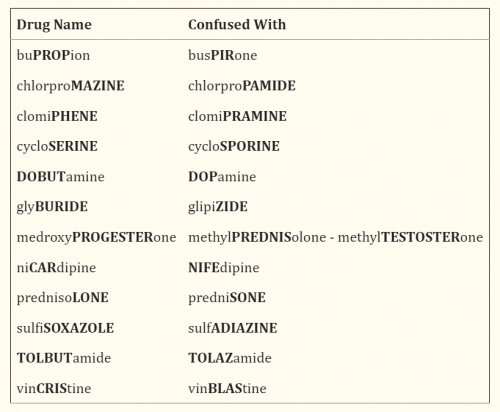In my last two posts, I reviewed some older papers on the efficacy of Andexxa (andexanet alfa) for the reversal of Factor Xa inhibitor anticoagulants. Those results were not very impressive, especially considering the high cost of this drug.
In 2021, an article was published (reference 1) that performed a systematic review of the literature from 2017 to 2020. It concluded that “available evidence does not unequivocally support the clinical effectiveness of andexanet alfa or prothrombin complex concentrate to reverse factor Xa inhibitor-associated acute major bleeding.” This is a very roundabout way of saying that it didn’t really work. The authors also set out to perform a meta-analysis but could not do so, given the data’s low quality.
However, 2024 was a banner year for systematic reviews of this type of study! Four of them with meta-analyses were published comparing andexanet alfa (AA) with 4-factor prothrombin complex concentrate (PCC). And to keep it confusing, the conclusions were highly variable. Results were evaluated based on successful anticoagulation (hemostatic efficacy), mortality, and thrombotic complications. I also closely reviewed the conflict of interest information if any of the authors had any relationship to AstraZeneca, which owns both AA and the anticoagulant it reverses (Andexxa).
The results were very interesting. Here is a table that condenses the key points.
| Reference # | Hem. Effic. | Mort. | Thrombosis | Conflict |
| 2 | AA better | No diff. | AA higher | No |
| 3 | —– | No diff. | AA higher | No |
| 4 | No diff. | No diff. | AA higher. | Yes |
| 5 | AA better | AA lower | No diff. | Yes |
Many of the same original studies were analyzed in more than one of these reviews. And unfortunately, the results and confidence intervals were mysteriously a bit different in each review.
I specifically highlighted the efficacy and thrombosis results in red in Paper #4 because the authors stated that the efficacy of AA was qualitatively higher and the thrombotic complications the same. But their analysis in the body of the paper suggested otherwise. These were qualitative trends and are overhyped in the section most people read in PubMed, the abstract. My red text reflects how the abstract should have read. This is very misleading.
I also find it interesting that paper #5, with five of the nine authors either employed by or speaking for the company, was the only one that found the AA mortality lower and the thrombotic events no different than PCC. I believe this represents significant bias, and I find it hard to believe that the authors would be allowed to publish a negative or even neutral study about a drug that their company owns.
Bottom line: Who to believe?
Restoring clotting: Most of these studies indicated that andexanet alfa may restore hemostasis more effectively.
Preventing death: This drug doesn’t appear to reduce mortality, which is the outcome we are most interested in when treating these patients.
Thrombotic complications. These do seem to be more common when AA is given.
And even after ten years, cost is still a major consideration. The average cost of a course of treatment in 2023 was $26,787 (ref 6). Can we justify such an expense if it doesn’t seem to save lives? This is a decision that you and your hospital administration will have to work out. At least until much, much better data comes along.
References:
- Andexanet Alfa or Prothrombin Complex Concentrate for Factor Xa Inhibitor Reversal in Acute Major Bleeding: A Systematic Review and Meta-Analysis. Crit Care Med. 2021 Oct 1;49(10):e1025-e1036. doi: 10.1097/CCM.0000000000005059. PMID: 33967205.
- Efficacy and Safety of Andexanet Alfa Versus Four Factor Prothrombin Complex Concentrate for Emergent Reversal of Factor Xa Inhibitor Associated Intracranial Hemorrhage: A Systematic Review and Meta-Analysis. Neurocrit Care. 2024 Oct 8. doi: 10.1007/s12028-024-02130-y. Epub ahead of print. PMID: 39379749.
- Andexanet alpha versus four-factor prothrombin complex concentrate in DOACs anticoagulation reversal: an updated systematic review and meta-analysis. Crit Care. 2024 Jul 5;28(1):221. doi: 10.1186/s13054-024-05014-x. PMID: 38970010; PMCID: PMC11225147.
- Andexanet Alfa versus Four-Factor Prothrombin Complex Concentrate for the Reversal of Factor Xa (FXa) Inhibitor-Associated Intracranial Hemorrhage: A Systematic Review of Retrospective Studies. J Clin Med. 2024 May 24;13(11):3077. doi: 10.3390/jcm13113077. PMID: 38892788; PMCID: PMC11173120.
- Andexanet alfa versus PCC products for factor Xa inhibitor bleeding: A systematic review with meta-analysis. Pharmacotherapy. 2024 May;44(5):394-408. doi: 10.1002/phar.2925. Epub 2024 May 9. PMID: 38721837.
- Cost information link


